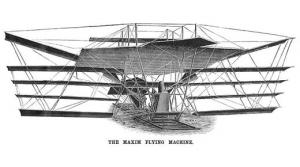
Mon, 04/30/2018 - 12:02
Imagine a factory with a large monument machine. It takes several days to set up. When it does run, it runs very fast, much faster than you can actually use its output. Therefore, you take the excess output and store it to use later. Actually, you…
Tue, 05/30/2017 - 12:03
It was September 1901, in Dayton, Ohio, and Wilbur Wright was frustrated. The previous year, 1900, he had built and tested, with his brother Orville’s help, their first full-size glider. It was designed using the most up-to-date information about… Ask, ‘What Do We Need to Learn?’ Not, ‘What Should We Do?’Stop trying stuff and hoping it works without understanding why
Thu, 12/15/2016 - 18:11
One of my readers, Darren, commented with some great questions about the “Takt Time-Cycle Time” post on my blog. He wondered which system is more efficient, a fixed, rigid takt-based production line or a flexible one-piece flow?
In terms of… Developing Cross-Functional AccountabilityPut responsibility where it belongs
Mon, 11/30/2015 - 15:21
It's a typical staff meeting. The function heads sit around the table with the boss. One of them describes a hiccup or problem he's encountering that's outside of his control because it originates in another department. An action item is assigned,… The Improvement Kata PDCA Cycles RecordWhat learning looks like
Mon, 11/16/2015 - 10:53
Improvement kata describes a routine for continuous improvement through four major steps. Those steps provide a structured pattern to enable consistent practice of each kata routine until it becomes habit—until it’s a natural way of thinking and… How Do You Measure Toyota Kata?Is ‘management by measurement’ a substitute for leadership?
Thu, 08/20/2015 - 10:14
I’ve run into a couple of cases where a corporate continuous improvement team orders an initiative to “implement Toyota kata.”
Aside from trying to prescribe each and every step of the process (which runs counter to the entire point of discovering… The Myth of 10,000 HoursExcessive perhaps, but it does take practice to build competency
Thu, 08/06/2015 - 11:17
In his TEDx talk, Josh Kaufman, author of The First 20 Hours (Portfolio, 2013), outlines his theory of learning a new skill. One of his key points is the prevailing belief that you have to spend 10,000 hours practicing a skill to become good at it… Actually, It Is Rocket ScienceApplying the scientific method to standardization
Tue, 05/05/2015 - 17:02
Once a project is completed, a common question is, “How do we deploy this improvement to other areas in the company?” A fair number of formal improvement structures include the final step of “standardize,” implying that the improvement is laterally… How Does Kaizen Differ From a Kaizen Event?Fixing problems vs. improving ourselves
Wed, 01/21/2015 - 17:10
The title of this article is a search term that recently hit The Lean Thinker site. It’s an interesting question—and interesting that it gets asked.
“Kaizen” is now an English word—it’s in the OED—and defined as such: “Noun. A Japanese business… Toyota Kata: Obstacles Are Not Action ItemsThat is why we ask, ‘What is the actual condition now?’
Mon, 10/20/2014 - 13:57
AToyota kata is not a list of stuff to do. To help people understand this, I often ask, “What obstacles do you think are preventing you from reaching the target?” I also like to insert the word “now” in there sometimes for emphasis. The intent (as…